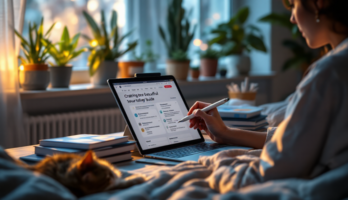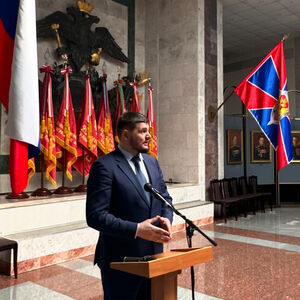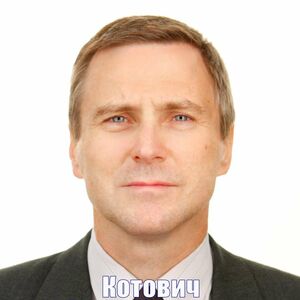Диссертация (1140030), страница 20
Текст из файла (страница 20)
Lower pole I: a prospective randomized trial of extracorporeal shock wavelithotripsy and percutaneous nephrostolithotomy for lower pole nephrolithiasisinitial results. The Journal of urology. 2001;166:2072-80.35. Arthur D. Smith, Glenn Preminger, Gopal Badlani, Louis R. Kavoussi. Smith'sTextbook of Endourology, 3rd Edition ISBN: 978-1-4443-3554-536. Bader MJ, Gratzke C, Seitz M, Sharma R, Stief CG, Desai M. The "all-seeingneedle": initial results of an optical puncture system confirming access inpercutaneous nephrolithotomy.
European urology. 2011;59:1054-9.37. Chaussy C, Schmiedt E, Jocham D, Brendel W, Forssmann B, Walther V. Firstclinical experience with extracorporeally induced destruction of kidney stones byshock waves. J Urol 1982;127:417–2038. Cracco CM. ECIRS (endoscopic combined intrarenal surgery) in the galdakaomodified supine valdivia position: a new life for percutaneous surgery? World JUrol. 2011;29(6):821–827.
doi: 10.1007/s00345-011-0790-0.39. Desai J, Zeng G, Zhao Z, Zhong W, Chen W, Wu W. A novel technique of ultramini-percutaneous nephrolithotomy: introduction and an initial experience fortreatment of upper urinary calculi less than 2 cm. BioMed research international.2013;2013:490793.40. Duty B: The debate over percutaneous nephrolithotomy positioning: acomprehensive review. J Urol 2011, 186(1):20–25. Epub 2011 May 14.).41.
El-Nahas AR, Eraky I, Shokeir AA, Shoma AM, El-Assmy AM, El-Tabey NA,Soliman S, Elshal AM, El-Kappany HA, El-Kenawy MR. Factors affecting stonefree rate and complications of percutaneous nephrolithotomy for treatment ofstaghorn stone. // Urology 2012. Vol. 79, N 6. p. 1236-124142. Galvin DJ, Pearle MS: The contemporary management of renal and ureteric calculi.BJU Int 2006, 98(6):1283–1288. 112. Méndez Probst CE: Preoperative indicationsfor percutaneous nephrolithotripsy in 2009. J Endourol 2009, 23(10):1557–1561.)43.
Ganpule AP: Multiperc versus single perc with flexible instrumentation forstaghorn calculi. J Endourol 2009, 23(10):1675–1678.)44. Gonen M, Turan H, Ozturk B, et al. Factors affecting fever following percutaneousnephrolithotomy: a prospective clinical study. J Endourol 2008Sep;22(9):21358.http://www.ncbi.nlm.nih.gov/pubmed/1881156912545. Helal M, Black T, Lockhart J, Figueroa TE. The Hickman peel-away sheath:alternative for pediatric percutaneous nephrolithotomy.
Journal of endourology /Endourological Society. 1997;11:171-2.46. Higgens DA, Pomianek ME, Kraml CM, Taylor RK, Semmelhack MF, Bassler BL.The major Vibro cholera autoinducer and its role in virulence factor production. //Nature. 2007. N 6. P. 883-886.47. Ibarluzea G: Supine Valdivia and modified lithotomy position forа simultaneousanterograde and retrograde endourological access. BJU Int 2007, 100(1):233–236.)48. Jean de la Rosette, Dean Assimos, Mahesh Desai, Jorge Gutierrez, JamesLingeman, Roberto Scarpa, and Ahmet Tefekli. Journal of Endourology. TheClinical Research Office of the Endourological Society PercutaneousNephrolithotomy Global Study: Indications, Complications, and Outcomes in 5803Patients January 2011, 25(1): 11-17.
doi:10.1089/end.2010.0424.)49. Juan YS, Chuang SM, Wu WJ, Shen JT, Wang CJ, Huang CH. Impact of lowerpole anatomy on stone clearance after shock wave lithotripsy. Kaohsiung J Med Sci2005;21:358–64,50. Kawahara TB: Ureteroscopy assisted retrograde nephrostomy: a new technique forpercutaneous nephrolithotomy (PCNL). JU Int 2011, 111(67):123–127.).51. Li HL: Percutaneous nephrolithotomy through the upper pole calix access forcomplicated renal calculi: report of 581 cases. Nan Fang Yi Ke Da Xue Xue Bao2011, 31(12):2079–2081.)52. Madhu S Agrawal and Mayank Agarwal Percutaneous nephrolithotomy: Largetube, small tube, tubeless, or totally tubeless? Indian J Urol. 2013 Jul-Sep; 29(3):219–224.
doi: 10.4103/0970-1591.117285 PMCID: PMC378370353. Monga M, Best S, Venkatesh R, Ames C, Lee C, Kuskowski M, et al. Durability offlexible ureteroscopes: a randomized, prospective study. The Journal of urology.2006;176:137-41.54. Morris DS, Wei JT, Taub DA, et al: Temporal trends in the use of percutaneousnephrolithotomy.
J Urol 2006, 175:1731–1736.55. Nagele U, Horstmann M, Sievert KD, etal. A newly designed amplatz sheathdecreasesintrapelvicirrigationpressureduringmini-percutaneousnephrolitholapaxy: an in-vitro pressure-measurement and microscopic study. JEndourol.2007Sep;21(9):1113-6.PubMedPMID:17941796.Epub2007/10/19.eng.56. Nickel JC, Olson M, McLean RJ, Grant SK, Costerton JW. An ecological study ofinfected urinary stone genesis in an animal model. // Br J Urol.
1987. Vol. 59, N 1.P. 21–30.57. Novak K. Treatment of the lower pole nephrolithiasis. CasLekCesk2005;144(Suppl. 2):45–7.58. Obek C, Onal B, Kantay K, Kalkan M, Yalcin V, Oner A, et al. The efficacy ofextracorporeal shock wave lithotripsy for isolated lower pole calculi compared withisolated middle and upper caliceal calculi. J Urol 2001;166:2081–4.)59.
Osman MM, Alfano Y, Kamp S, et al. 5-year-follow-up of patients with clinicallyinsignificant residual fragments after extracorporeal shockwave lithotripsy. EurUrol2005 Jun;47(6):860-4.12660. Pearle MS, Lingeman JE, Leveillee R, Kuo R, Preminger GM, Nadler RB, et al.Prospective, randomized trial comparing shock wave lithotripsy and ureteroscopyfor lower pole caliceal calculi 1 cm or less.
The Journal of urology. 2005;173:20059. Percutaneous Nephrolithotomy Global Study61. Preminger GM, Tiselius HG, Assimos DG, Alken P, Buck AC, Galluci M, et al.2007 Guideline for the management of ureteral calculi. EurUrol 2007;52:1610–31.62. Preminger GM. Management of lower pole renal calculi: shock wave lithotripsyversus percutaneous nephrolithotomy versus flexible ureteroscopy. Urologicalresearch.
2006;34:108-11.63. Ramello A, Vitale C, Marangella D. Epidemiology of nephrolithiasis. // J Nephrol.2000. Vol. 13, Suppl. 3. P. 45-50.64. Riedler I, Trummer H, Hebel P, Hubmer G. Outcome and safety of extracorporealshock wave lithotripsy as first-line therapy of lower pole nephrolithiasis. UrolInt2003;71:350–4. 340 Knoll et al.65. Roger K. LOW, M.D. Nephroscopy Sheath Characteristics and Intrarenal PelvicPressure: Human Kidney Model, JOURNAL OF ENDOUROLOGY Volume 13,Number 3, April 1999 Mary Ann Liebert, Inc.)66.
Romero V AH, Assimos DG. Kidney Stones: A Global Picture of Prevalence,Incidence, and Associated Risk Factors. // Rev Urol. 2010. Vol. 12, N 2/3. P. 86-96.67. Seitz C, Desai M, Hacker A, et al. Incidence, prevention, and management ofcomplications following percutaneous nephrolitholapaxy. EurUrol 2012Jan;61(1):146-58. http://www.ncbi.nlm.nih.gov/pubmed/21978422163.68. Skolarikos A, Alivizatos G, de la Rosette J.
Extracorporeal shock wave lithotripsy25 years later: complications and their prevention. EurUrol 2006 Nov;50(5):98190; discussion 90.69. Supine Versus Prone Position During Percutaneous Nephrolithotomy: A Reportfrom the Clinical Research Office of the Endourological Society PercutaneousNephrolithotomy Global Study70. Tiselius HG, Ackermann D, Alken P, Buck C, Conort P, Gallucci M. Guidelines onurolithiasis. EurUrol 2001;40:362–71.The Clinical Research Office of theEndourological Society Percutaneous Nephrolithotomy Global Study: Indications,Complications, and Outcomes in 5803 Patients71.
Turney BW: Trends in urological stone disease. BJU Int 2011, 24(6):382–386.72. Undre S, Olsen S, Mustafa N, Patel A: Pass the ball! Simultaneous flexiblenephroscopy and retrograde intrarenal surgery for large residual upper-pole staghorn stone. J Endourol 2004, 18:844–847.)73. Valdivia JG, Scarpa RM, Duvdevani M, Gross AJ, Nadler RB, Nutahara K, de laRosette JJ; Croes PCNL Study Group.Supine Versus Prone Position DuringPercutaneous Nephrolithotomy: A Report from the Clinical Research Office of theEndourological Society PercutaneousNephrolithotomy Global Study? J Endourol.2011 Oct;25(10):1619-25.
doi: 10.1089/end.2011.0110. Epub 2011 Aug 30.74. Wong C, Leveillee RJ: Single upper-pole percutaneous access for treatment of >or¼5-cm complex branched staghorn calculi: is shockwave lithotripsy necessary? JEndourol 2002, 16:477–481. 119.12775. Yamaguchi A, Skolarikos A, Buchholz NP, Chomón GB, Grasso M, Saba P,Nakada S, de la Rosette J Operating Times and Bleeding Complications inPercutaneous Nephrolithotomy: A Comparison of Tract Dilation Methods in 5537Patients in the Clinical Research Office of the Endourological Society PercutaneousNephrolithotomy Global Study; Clinical Research Office Of The EndourologicalSociety Percutaneous Nephrolithotomy Study Group.
J Endourol. 2011Jun;25(6):933-9. doi: 10.1089/end.2010.0606. Epub 2011 May 13.76. Zanetti G, Ostini F, Montanari E, et al. Cardiac dysrhythmias induced byextracorporeal shockwave lithotripsy. J EndoUrol 1999 Jul-Aug;13(6):409-12.http://www.ncbi.nlm.nih.gov/pubmed/1047900577. Zanetti G, Paparella S, Trinchieri A, et al. Infections and urolithiasis: currentclinical evidence in prophylaxis and antibiotic therapy.
Arch Ital UrolAndrol 2008Mar;80(1):5-12. http://www.ncbi.nlm.nih.gov/pubmed/18533618164.78. Zhang X. BJ, Ma P., Ma J., Wan J., Jiang B. Melamine-induced infant urinarycalculi: a report on 24 cases and a 1-year follow-up. // Urol Res., 2010. Vol. 38, N5. P. 391 - 395.128ИСПОЛЬЗОВАННЫЕ СОКРАЩЕНИЯ.ВМП – верхние мочевые путиЛМС – лоханочно-мочеточниковый сегментЧЛС – чашечно-лоханочная системаУЗИ – ультразвуковое исследованиеМКБ – мочекаменная болезньРИРХ – ретроградная интраренальная хирургияДУВЛ – дистанционная ударно-волновая литотрипсияЧНЛТ – чрескожная нефролитотрипсияМИП – минимальноинвазивная перкутанная нефролитотрипсияУМП – ультраминиперкутанная нефролитотрипсияHU – единицы ХаунсфильдаSFR (stone free rate) – частота полного избавления от камнейЕАУ - Европейская Ассоциация Урологов129Приложение 1130Приложение 2@opruaNb94I{3,IM, fIO-2011Oegepa.nbHafl cilyx6a no HHTerrJrerflyaJrnnofi co6crneHHocruO e4eparrbHoerocyAapcrBeHHoe6rcAxernoe yqp excAeHVe(OeAepaJrbHbrft uHcrnTyr np oMbrrrrJreHHofi codcrneHHocru>(onrc)Te.rreSon (8-499) 240-ffi-15 @arcc(8-495) 531-63-18Eepexrconcrcan na6., 30, rcopn.
















